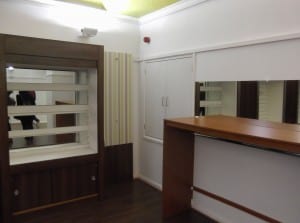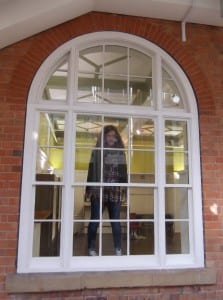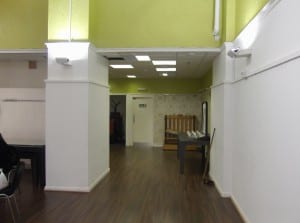Knowing that we want to do an instillation piece for our shop, being given the task of a weekly performance seemed initially quite difficult for our group.
Nevertheless, we persevered and developed a piece around the concept of a brain implantation designed to recreate and replace damaged brain cells. Thinking more about how our “company” could benefit humanity we decided to work around the idea of Alzheimer’s Disease and focus on the positive effects of ‘medical upgrades’. Obviously this involved a lot of research around alzheimers including the affected areas of the brain, current treatment options and the way in which our product could theoretically treat the disease. Based on the reviews and comments from our peers, this piece was well received and I’ll focus this blog entry on some of the comments and advice given (warning, this could be long).
- The main point was that Alzheimer’s Disease is often (though not exclusively) seen in older people. Being only around 20 ourselves the notion of us having severe Alzheimer’s was unrealistic and we were encouraged to think of more age appropriate conditions.
- My own ‘overly happy’ persona was met with positive criticism, some saying that it gave the piece a creepy feel seeing as the situation was quite serious.
- It seemed a good idea to the class that we included a lot of research regarding the disease and the possible practical functions of the implant. It made the scene look more realistic despite futuristic undertones.
- Some suggested that we follow a more ‘vain’ route, focusing our products on things such as eye colour, age reduction skin creams and vocal enhancements (all ideas we had concocted previously but not fully explored).
- Some claimed that the idea of testing products reminded them of animal testing and made them question our morals and intentions. I feel we need to make the suggestion of vanity vs. medical aid clearer in future performances.
- It was pointed out that the audience participation was a good idea (we treated the piece as a tour of our labs) but this was lost slightly as we were only in one room.
Overall the 5 minute piece worked well, particularly with some media work, but most of our peers requested a more realistic approach and a further look into our ideas for vanity enhancements.


